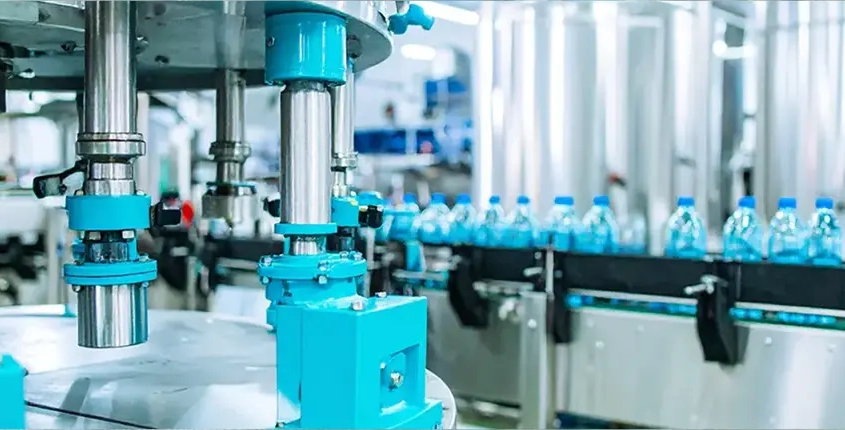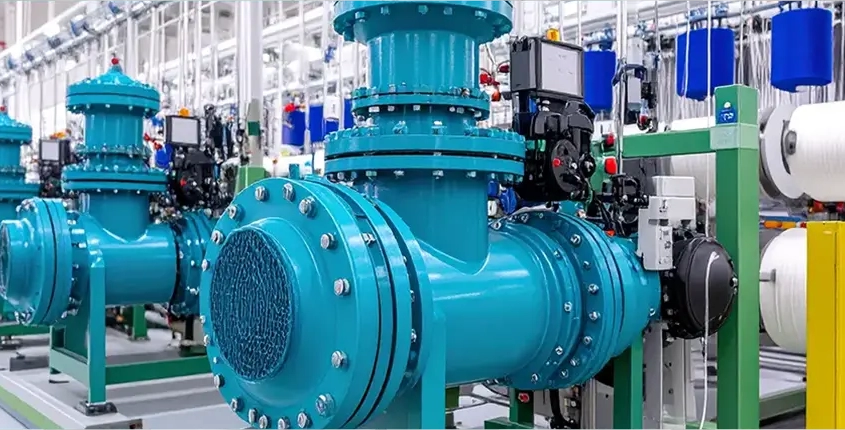Choosing the right valve is a critical decision in any industrial process, directly impacting safety, efficiency, and long-term operational costs. The vast array of valve types, materials, and configurations can be overwhelming, especially when specific applications and process requirements are taken into account. Understanding the fundamentals of valve selection is essential for engineers, maintenance managers, and anyone responsible for fluid control in industrial settings. This practical guide will walk you through the core considerations and best practices for selecting valves suited to your unique industrial processes.
UNDERSTANDING VALVE TYPES AND THEIR INDUSTRIAL APPLICATIONS
Valves come in various designs, each tailored for specific functions within an industrial process. The most common types include gate, globe, ball, butterfly, and check valves. Gate valves are typically used for on-off control, allowing full flow or complete shutoff with minimal pressure drop. Their design makes them ideal for applications requiring infrequent operation, such as pipeline isolation.
Globe valves, on the other hand, excel in modulating flow. Their internal structure allows precise throttling, which is essential in processes where controlling flow rate or pressure is critical. These are often found in cooling systems or feedwater control in power plants. Ball valves are favored for their quick operation and tight sealing, making them suitable for both shutoff and moderate throttling in applications like gas lines and chemical processing.
Butterfly valves, recognized by their compact design and rotating disc, are excellent for large volume, low-pressure applications. They are common in water distribution, HVAC systems, and some food processing industries due to their lightweight and easy installation. Check valves, which permit flow in only one direction, protect equipment from backflow—a crucial feature in pumping systems.
Each valve type offers unique advantages and operational characteristics. It’s important to match the valve to the application, considering factors like fluid type, flow requirements, and system pressure. A ball valve might be ideal for a quick-shutoff scenario, but a globe valve could be better for fine flow regulation. Understanding these differences is the first step toward making an informed selection.
When evaluating valve types for your process, think about not only the immediate function but also the long-term maintenance and operational needs. Some valves are easier to maintain or offer longer service intervals, while others might need regular inspection or part replacement. The right choice balances performance, reliability, and ease of use within the given industrial context.
KEY FACTORS TO CONSIDER WHEN SELECTING INDUSTRIAL VALVES
Selecting the appropriate valve for an industrial process involves more than just choosing a type; several key factors must be carefully weighed. First and foremost is the nature of the media being controlled. Whether it’s a liquid, gas, steam, or slurry, the properties of the process fluid—such as corrosiveness, temperature, and viscosity—will influence valve selection. For instance, abrasive slurries may demand specially lined valves, while aggressive chemicals often require corrosion-resistant materials.
Pressure and temperature ratings are equally critical. Every valve is designed to operate within specific pressure and temperature limits. Exceeding these can compromise safety, lead to leaks, or even result in catastrophic failure. Always consult manufacturer specifications and ensure the selected valve matches or exceeds the system’s maximum operating conditions.
Another important consideration is the required flow control. Some processes need precise modulation of flow, while others only require simple on/off operation. The valve’s ability to provide linear, equal percentage, or quick opening characteristics should match the process control requirements. This ensures both efficient operation and the longevity of associated equipment.
Actuation is another key decision point. Manual, electric, pneumatic, or hydraulic actuators influence how the valve is operated and integrated into an automated system. For remote or automated processes, the choice of actuator can affect response time, reliability, and maintenance requirements. In hazardous environments, explosion-proof actuators may be necessary.
Additionally, consider the valve’s installation and maintenance needs. Accessibility for inspection, cleaning, and repair should always be factored in, particularly for systems where downtime is costly. Some valve designs allow for in-line maintenance, while others require full removal from the pipeline. This can have significant implications for operational efficiency.
Lastly, regulatory and safety standards must not be overlooked. Industry-specific codes—such as ASME, API, or ISO—may dictate certain valve characteristics or certifications. Ensuring compliance from the outset avoids costly retrofits and helps maintain a safe working environment. By thoroughly assessing these factors, you can select a valve that not only fits your process but also supports long-term safety and efficiency.
COMPARING MATERIALS AND CONSTRUCTION FOR VALVE DURABILITY
Material selection is a pivotal aspect of valve durability and performance. The compatibility of valve materials with process media directly affects the longevity of both the valve and the entire system. Common valve body materials include cast iron, stainless steel, carbon steel, brass, and various specialty alloys. The nature of the process fluid—whether corrosive, abrasive, or containing particulates—should guide material choice.
Stainless steel valves are highly resistant to corrosion and well-suited for harsh chemical environments or sanitary applications, such as food processing or pharmaceuticals. Carbon steel offers strength and durability, making it ideal for high-pressure steam or oil and gas pipelines, but it may not perform well with corrosive media. Cast iron is cost-effective and works well in low-pressure water and HVAC systems, but is brittle and unsuitable for high-impact or high-temperature applications.
Internal valve components, such as seats, seals, and discs, also require careful consideration. Soft-seated valves, using materials like PTFE or rubber, provide excellent sealing and are commonly used for chemical and low-pressure applications. However, they may degrade quickly under high temperatures or with abrasive fluids. Metal-seated valves, while more expensive, offer greater longevity where extreme temperatures or pressures are involved.
Manufacturers may offer special coatings or linings, such as epoxy, ceramic, or Teflon, to further enhance resistance to corrosion, wear, or fouling. These enhancements can significantly extend valve service life, especially in challenging environments like mining, wastewater treatment, or pulp and paper manufacturing. However, these options often come at a higher upfront cost, so a careful cost-benefit analysis is recommended.
The construction quality of a valve is another key facet. Valves with robust bolting, high-quality machining, and precise tolerances generally offer greater reliability and reduced leakage risk. It’s wise to select valves from reputable manufacturers with proven track records and certifications relevant to your industry.
Ultimately, the choice of material and construction should reflect both the demands of the process and the expected lifecycle of the valve. Investing in higher-grade materials or advanced coatings may reduce maintenance and replacement costs over time, minimizing downtime and improving process reliability.
GUIDELINES FOR SIZING AND INSTALLATION OF INDUSTRIAL VALVES
Correct sizing is crucial for optimal valve performance and system efficiency. A valve that is too small will restrict flow, increase pressure drop, and potentially cause cavitation or vibration. Conversely, an oversized valve can make flow control difficult, leading to instability and excessive wear. To determine the proper size, consider both the maximum and minimum required flow rates, as well as the system’s operating pressure.
Valve sizing typically involves calculations using flow coefficients (Cv or Kv), which represent the valve’s capacity to pass fluid under certain conditions. These calculations should take into account the viscosity and density of the fluid, alongside system-specific parameters like upstream and downstream pressures. Most valve manufacturers provide sizing charts and software tools to assist in this process, ensuring an accurate match to your needs.
Installation practices also play a significant role in valve performance and longevity. Proper alignment with the pipework is essential to avoid undue stress and prevent leaks. Valves should be installed with sufficient clearance for operation, maintenance, and eventual replacement. Supporting heavy valves or those subject to vibration helps prevent mechanical failure at the pipe joints.
Orientation matters as well. Some valves, such as check valves or pressure relief valves, must be installed in a specific direction to function correctly. Double-check flow direction markings and refer to the manufacturer’s guidelines to avoid costly errors. In addition, adhere to recommended torque values when tightening bolts and connections to maintain seals without damaging components.
Testing and commissioning are final steps that should not be skipped. Pressure testing, leak checks, and functional verification ensure the valve operates as intended before the process goes live. Documenting these procedures helps with future troubleshooting and maintenance planning.
Regular inspection and preventive maintenance, based on both manufacturer recommendations and process experience, will maximize the service life of your valves. Keeping detailed records of installation, sizing, and maintenance activities aids in predicting wear patterns and planning timely replacements, thereby supporting continuous, efficient operation.
Selecting the right valve for your industrial process involves a careful balance of type, material, sizing, and installation considerations. By understanding the unique characteristics and applications of different valves, evaluating key selection factors, and prioritizing durability through appropriate material choices, you can ensure a safe, efficient, and cost-effective operation. Proper sizing and installation further safeguard against process disruptions and premature equipment failure. Ultimately, thoughtful valve selection is an investment in the reliability and longevity of your entire industrial system, making it an essential aspect of process design and ongoing maintenance.



